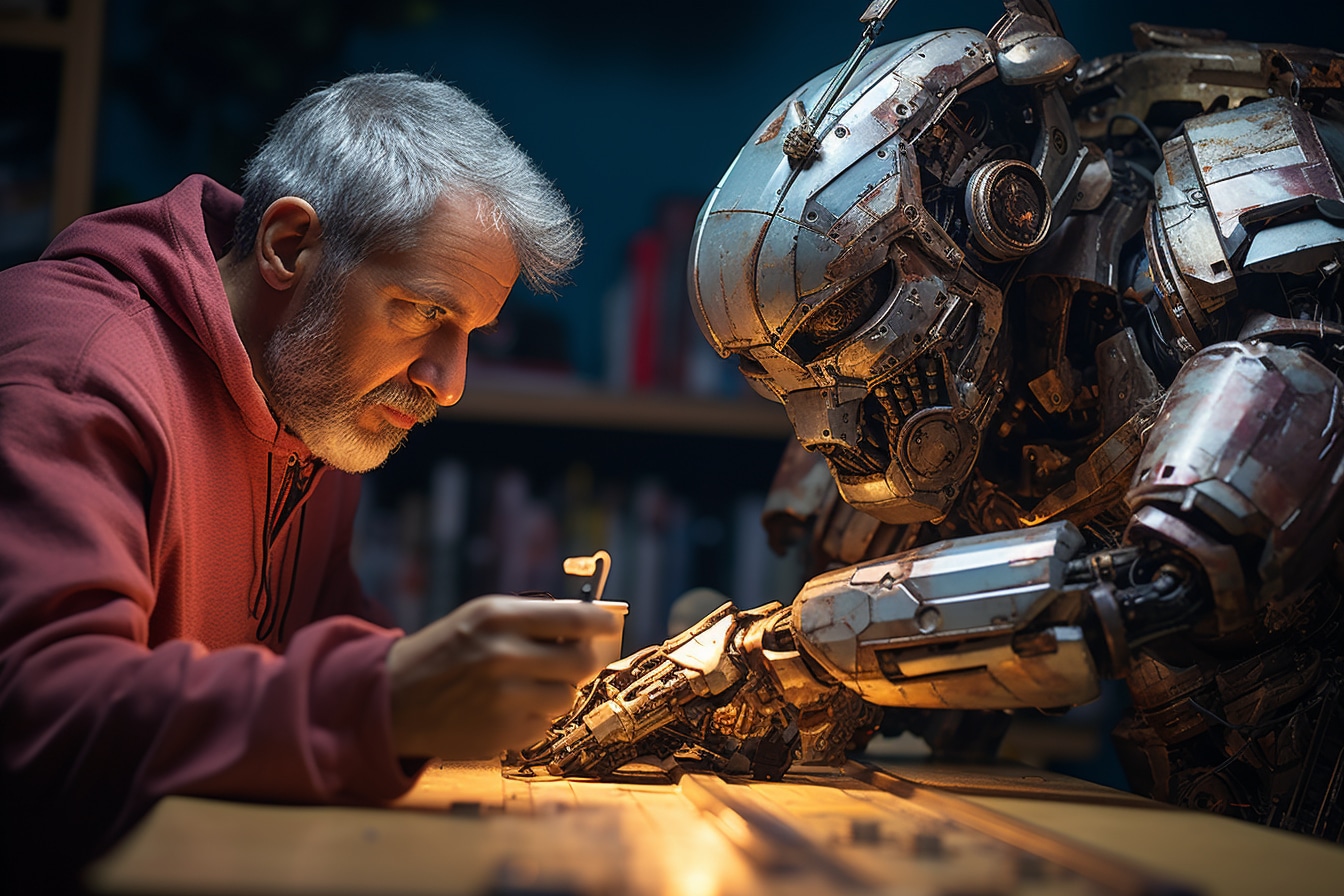Artificial intelligence (AI) has made considerable progress in recent years, and its impact on a variety of fields is undeniable. One such area is art and image perception, where AI has opened up countless new perspectives for artists and art lovers alike. In this article, we’ll explore some of the ways AI is changing the way we perceive art and images.
Augmented creativity thanks to AI
One of AI’s main contributions to the art world is its ability to enhance creativity for artists. Thanks to specially designed software that uses artificial intelligence, artists can now create one-of-a-kind works of art that combine different ideas, art forms and techniques.
AI-based image generators
Software such as DeepArt and NeuralStyler enable artists to create images by fusing different ideas and styles, all from a single source image. These tools also allow artists to generate images by applying different filters and effects to produce a wide variety of visual results.
IA and artistic techniques
AI can also help artists adopt new techniques and approaches to creating artworks. For example, software such as Google’s DeepDream enables users to create images using a pre-trained convolutional neural network, which learns to recognize and reproduce various shapes and patterns.
Collaboration between man and machine
Artists can now take advantage of artificial intelligence to work collaboratively with machines in the creative process. This human-machine collaboration opens up new possibilities for artists, allowing them to explore ideas and concepts they might not have been able to realize on their own.
Computer-aided design
With tools such as OpenAI’s DALL-E, artists can generate images from simple text descriptions, enabling faster and more accurate creation of artworks. In addition, AI can help artists improve their work by providing suggestions and recommendations based on data analysis and predictive models.
AI-artist collaborative projects
Many artistic projects now involve collaboration between artists and engineers specializing in artificial intelligence. These collaborations combine the technical expertise of AI with the creative vision of artists, giving rise to innovative and unique works of art.
A new look at historical images
Artificial intelligence has also enabled researchers and art lovers to rediscover and reinterpret historical images. Using techniques such as deep learning and image recognition, AI can analyze and reconstruct old or degraded images, revealing new details and information once lost.
Image restoration and reconstruction
Projects such as Time-Travel Rephotography have used AI to colorize and restore historical photographs, offering a new look at the past. Similarly, software such as NeuralStyler can be used to give new life to ancient works of art by transforming them using deep learning techniques.
Analysis and interpretation of works of art
Artificial intelligence is also used to analyze and interpret works of art by identifying and deciphering visual or symbolic elements. This enables researchers and art lovers to better understand the context and meaning of a work of art, enriching our appreciation of the art itself.
A personalized art experience
Finally, AI also has the potential to make the art experience more personalized for viewers. Using image processing and recommendation techniques, AI can suggest artworks based on each user’s individual preferences, creating a bespoke art experience.
AI-based recommendations
Platforms such as Artfinder and Artsy use artificial intelligence to provide art recommendations based on each user’s tastes and interests. This enables art lovers to discover new works and artists that match their preferences, enriching their overall art experience.
Interactive and immersive art
The use of AI in the creation of interactive and immersive art also offers viewers a personalized art experience. From art installations that react to the viewer’s movement or presence, to virtual reality experiences that place the user at the heart of the artwork, artificial intelligence opens up new possibilities for engaging and inspiring art lovers.
In conclusion, artificial intelligence is radically transforming the way we perceive art and images. By pushing the boundaries of human creativity, encouraging collaboration between man and machine, rediscovering historic images and offering a personalized art experience, AI is opening up exciting and innovative possibilities for artists and art lovers alike.




